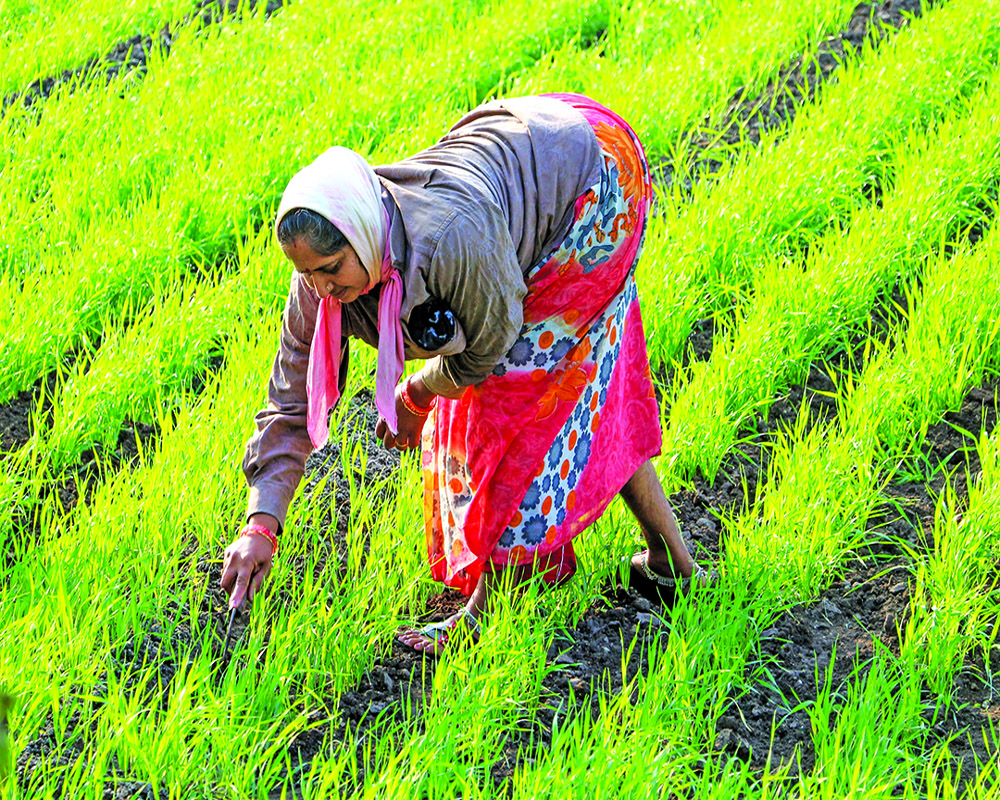Unlike the days of yore, Govts need to incentivise crops which suit modern life
In the early human civilisations, it was geography and weather that decided what crops were to be grown in any region. The same crop was consumed by the people of that area. Exports were tough and risky. But, in modern civilisation, Governments directly or indirectly control the food consumed.
Government subsidies are offered in various ways. It can be direct transfers to farmers by cash transfer (DBT) or by providing them with subsidized electricity, water, diesel, pesticides, fertilizer etc. Subsidies have also been provided in the form of MSP (minimum selling price) for certain agricultural products. Subsidies given to small and big enterprises are to set up export-oriented units or food processing units, cold storages, warehouses, or to set up SEZs or food parks to enhance the production of a particular cereal crop, fruit, vegetable, fish, meat products or certain packed products/processed food (dairy, apiculture) etc. By giving subsidies to farmers, the government incentivizes farmers to grow a particular crop, which can become a mass consumption item as government subsidies make it really cheap to produce and reduce the price of the products, and these crops when subsidized can change the dietary habits of not only millions but billions of people. A remarkable example of such action is the USA subsidizing corn and corn-related products which have flooded not only the American market but also the world market with products like corn flour, cornstarch, corn syrup etc. Another remarkable example is from India. Government subsidy on rice and sugarcane has made India one of the largest producers of this agricultural produce. It has also made India one of the biggest exporters of these both commodities and flooding not only the Indian market but also the world market with it. Also, the Indian government gives rice and sugar subsidised to public distribution centres.
Well, there is nothing wrong in giving incentives to farmers to produce more to get good rates for their produce, but in the case of India, the biggest problem that we are facing is, that both these crops are highly water-intensive crops and a country of 1.4 billion is already facing a lot of trouble with its groundwater and water irrigation. Exporting these crops is like exporting water from the country. Rice cultivation also produces a large amount of methane, which is a harmful greenhouse gas (GHG). Another problem is that both these crops are high in carbohydrates and combined with an unhealthy lifestyle can lead to diseases such as obesity, diabetes, high blood pressure and other heart-related issues. Governments across the world should, before incentivising a certain crop, consider that incentivizing one crop can really impact the consumption patterns of the masses. It can have a detrimental effect on the health of millions of people.
Another remarkable example is from the industrialization period in Europe and America. Potatoes were made a mass-consumed vegetable as the labour working in the factories needed high calories and carbohydrates to function in the long shifts of the factories. This dietary habit continued even after the industrialization era ended. For the generations after that, potatoes still remained the go-to vegetable as it was a cheap vegetable and people ate it in the past, hence the generations copied the same eating habits even after changes in working and lifestyle.
Today's lifestyle requires less physical work and more mental effort, which requires crops and dietary habit changes. This change can benefit generations to come. For example, eyesight weakness and malnutrition are common problems children face these days. To curtail these problems vital vitamins like vitamin A and C-rich fruits and vegetables can be incentivized by the government. Less water-intensive cereals like Bajra, Jau, and Ragi can be incentivized to become part of the daily meal plan. The year 2023 has been declared the millet international year by the United Nations. This is “as it consumes 70% less water than rice and needs 40% less energy in processing and is climate-friendly and environmentally friendly.”
(The writer is the Director of Rathi Public Schools)


























